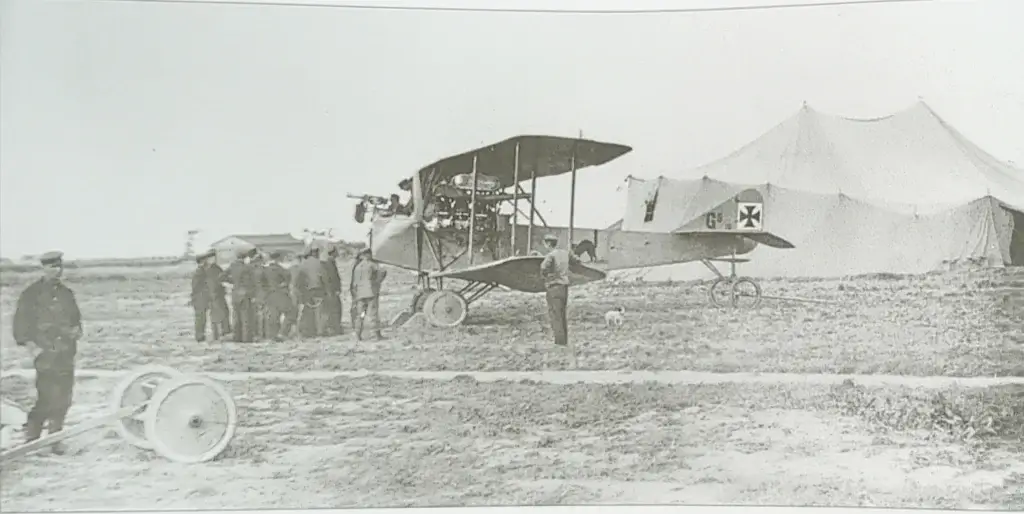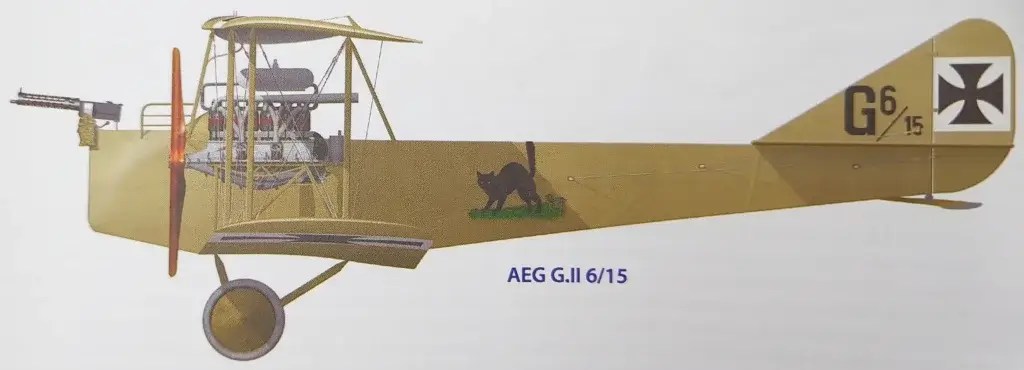Bombing from Gistel
Event ID: 511
Categories:
21 August 1915
Source ID: 41
”
An airfield was constructed between Snaaskerksestraat and Zomerloosstraat, close to Gistel station. A branch line from the Ostend-Torhout railway provided supplies.
In November 1914, the Brieftauben Abteilung Oostende was established in occupied Ostend, but under this cover name, which was actually Kampfgeschwader 1, the Germans carried out bombings. This happened, among other places, in January 1915 on Belgian positions in Dunkirk. Around the same period, Kagohl I left the airfield for Metz, but soon returned. On 22 July 1916, the I. Marine Feldflieger Abteilung was flown from Ostend/Mariakerke to Gistel. The unit carried out several bombings in March and April. In the summer of 1917, the unit moved to Vlissegem. It is very interesting to note that the very first bombing raid on London was planned from this airfield. This was actually the initiative of Flugmeister Wlather Ilges and Leutnant Paul Brandt, who flew to England that day in their LVG CII and dropped six ten-kilogram bombs over the British capital. They eventually had to make an emergency landing on the beach at Boulange and were taken prisoner. Brieftauben Abteilung B-type aircraft (including LVG CII) period July 1915, early 1916 converted to Kagohl 1 : 6 Staffeln, carried out bombings on Verdun with two-seaters.
The famous ace Manfred von Richthoven flew here as an observer. In 1916, Kagohl I flew with LVG CII and Rumpler CI. A remarkable fact is that on 28 November 1916, the crew of Leutnant Walter Ilges and Uffz Paul Brandt took off in an LVG for the first raid on London. They dropped six ten-kilogram bombs. The damage was minor and was located between Brompton Road and Victoria Station. The crew would pay dearly for their overconfidence. Over northern France, the LVG suffered engine failure and the crew had to make an emergency landing near Boulogne. Both pilots, who had carried out the first aerial bombardment of London, were taken prisoner of war.
Kagohl 3: 6 Staffeln (13 to 18), equipped with Gotha IV from March 1917, moved to Sint-Denijs-Westrem and Melle-Gontrode in April 1917 because they were too close to the front. Jasta 17: coming from St Quintin-le-Petit, 24 June 1917 – Wasquehal, 28 August 1917 Jasta 2: coming from Bissegem, 12 August 1917 – Jabbeke, 26 August 1917
Source: Deneckere Bernard, De luchtoorlog boven West-Vlaanderen (The Air War over West Flanders), Groeninghe, Kortrijk 1997″


Comments (0)